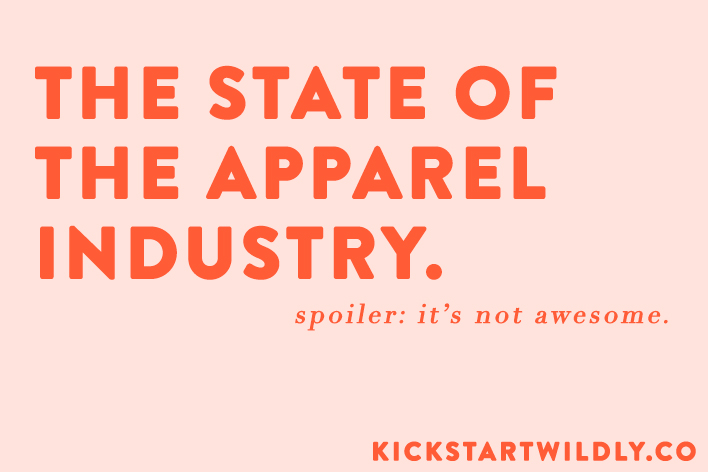
I have hesitated to write this post, because I’ve always said I want to be about what I’m FOR not what I’m against. But, I’ve realized that not everyone knows how their garments are made or how in the world you can buy a $10 pair of jeans…that certainly wasn’t the case 20 years ago.
As of the early 1990s, more than 97% of textile manufacturing for US retailers was done here in the United States. Specifically, North Carolina had an absolutely BOOMING textile industry with shops of more than 500 employees sewing away on the regular. Hanes Tshirts were still produced with miles and miles of fabric flowing through the factories of North Carolina.
But, something changed. Companies started going after more and more aggressive margins and they started chasing cheap labor in unregulated countries. As soon as there were tragedies or enough public outcry, regulations would be instituted making the labor more expensive and retailers would head out to the next unregulated country.

Now, I come from a long line of Republicans and I live in the most Republican county in one of the most Republican states. I hear all of you crying “free market”.
But, this is the time to exercise our choice in the free market.
I understand that businesses should be able to make choices to stay competitive and innovative. I actually AGREE with that. But, I think if it came down to it, if you stood in the factories (and that is a GENEROUS name for some of the buildings and conditions) and looked at the conditions some garment workers sew in…you’d be required by your personal ethics to at least examine your apparel choices. Maybe you’d have to curb your fast-fashion consumption and buy fewer items created with fair labor practices.
I know that’s the case for me. I can’t look at a situation like this current Bangladeshi garment worker hunger strike and not think twice about my cheap $7 T-shirt.
To live in America is to be isolated from much of the uncomfortable realities in the world. We’ve cocooned ourselves, for better AND for worse, in comfort and stability. But, in the apparel industry, many times the deeper the supply chain goes the more questionable to conditions become. We like our stores in the mall to be bright and shiny and for the employees to be healthy, good looking, and clean. By nature, we don’t worry as much about the workers we can’t see. We don’t want to/don’t have to think too much about what the lives of the people producing our goods (be it T-shirts, electronics, or chicken breasts).
It has been this way since the industrial revolution, but as time went on, Americans saw it fit to protect workers, giving them rights and workplace safety. We protect childhood innocence by outlawing child labor.
We think it’s only right that we extend basic human protections to the people making the goods we buy. For us, it’s not that we purposely wanted to exploit workers for our $7 T–it’s that we flat out didn’t know.

I guess I assumed that if I was buying a shirt for $7, it MUST be made by a machine of mass production. But they are most decidedly NOT. Every stitch is made by a person hunched over a sewing machine much like one your grandmother used. There are not many ways to make the job faster. In fact, one children’s shirt we were designing for our Fall Capsule Wardrobe (a button up oxford type shirt) was intricate and it took long enough to make that it priced it past the point where we could offer it to our customers who have been conditioned with fast-fashion prices.
This oxford shirt would have historically been viewed as a special more expensive piece of “church clothes” or “school clothes”–but is now just assumed to be a regular cheap shirt like the rest of them. Not many people would be willing to pay the cost it would take to buy the fabric, pay for the labor, and pay for the very lean costs of running Wildly Co.
This is why Wildly Co. is all about producing simple, well made garments. The fancier stuff just gets too expensive for everyday kids clothes–and really that’s how it should be. Childhood is simple, no reason their clothes shouldn’t be, too.
We would invite you learn more about the state of the apparel industry through these links:
Current Bangladeshi Hunger Strike–Bangladesh is now the forerunner of apparel labor
The Shirt On Your Back–a docu-site explaining garment work in Bangladesh
The State of the Apparel Industry
If you want to join us in the Wildly Co. mission–click below!

